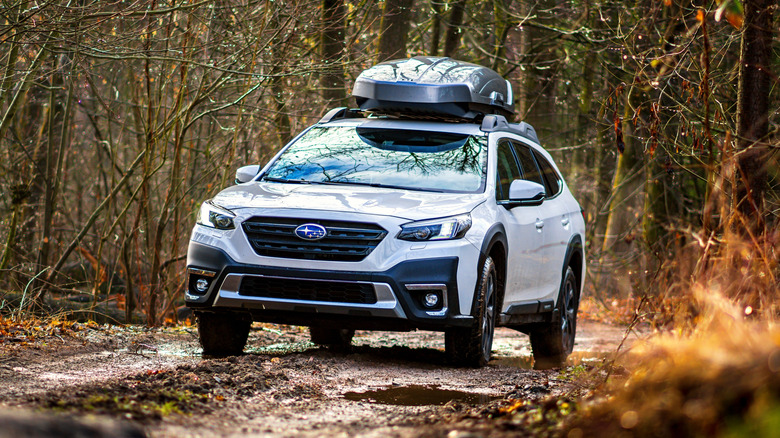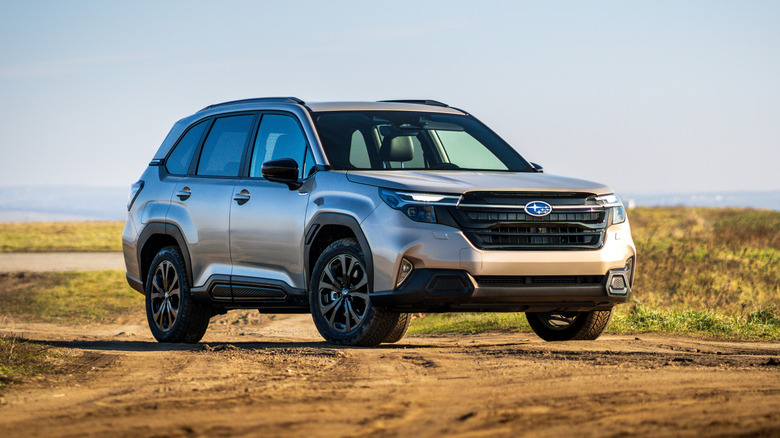Are There Any Downsides To AWD Vehicles? Here's What You Should Know
Vehicles have evolved in big and small ways throughout the decades, making them more capable than ever of getting from point A to point B. For instance, many cars, trucks, and SUVs on the road today have embraced all-wheel drive technology — not to be confused with four-wheel drive. For those unfamiliar with how AWD systems work, the gist is that all four wheels are provided differing power levels at any given time, responding to road conditions to prevent slippage. They utilize front, rear, and center differentials to make this happen, providing drivers added traction on precarious surfaces.
While AWD might sound like a great system, there are some major downsides to consider. For one, AWD systems aren't perfect. The sensors responsible for it may fail to adjust to sudden changes in road conditions, resulting in lost traction, and you could lose out on cabin space due to the size of the driveshaft. If you like to work on your vehicle, an AWD can be a pain due to its complexity under the hood compared to other rides. However, the arguable biggest drawback to an AWD vehicle is the increased costs behind it.
The increased cost of AWD vehicles is impossible to ignore
Right out of the gate, it's not uncommon for AWD vehicles to cost more than other models, thanks predominantly to the enhanced features that come with this system. There's also the matter of gas consumption, which can increase dramatically if you're constantly driving uphill, towing, or putting your vehicle through other strenuous conditions.
You'll also likely experience signs you need to replace your brake pads — like screeching, a vibrating brake pedal, and brake warning lights — more often because AWD vehicles can go through brakes faster if they have a brake-based torque vectoring system. This means you'll have to pay to have them done or replace them yourself more frequently.
AWD also means paying closer attention to the condition of your tires, since traction is such a crucial element of the system. For even wearing, replacing all four tires at once is in your best interest, as opposed to just having two at a time done on a front-wheel drive vehicle. Similarly, winter and all-season tires are still needed on AWD vehicles, since the system isn't a replacement for good, season-ready tires. Also, the complexity and increased number of wear and tear-prone parts on AWD vehicles generate higher mechanic costs, too.
AWD vehicles have their share of redeeming qualities
Despite all the issues with all-wheel drive vehicles, they're not entirely devoid of redeeming qualities. AWD vehicles bring a level of traction that most vehicles can only hope for. They're excellent for keeping drivers and passengers alike safe in snowy or icy conditions, especially with the addition of winter tires. Thanks to this technology, AWD-enhanced vehicles are great for rugged roads or full-on off-roading, too. Look no further than many of the AWD models from Subaru, which have proven prime for off-roading adventures.
There's also a silver lining to paying more for an AWD vehicle and keeping it in working order. Thanks to their performance advantages, these rides tend to hold their value better than most others. When it comes time for you to trade in or sell your vehicle, there's a good chance you'll make some of that money back. On the whole, AWD rides offer drivers peace of mind, letting them know that even in the worst of road conditions, they're in a comparatively safer mode of transportation than other drivers.


